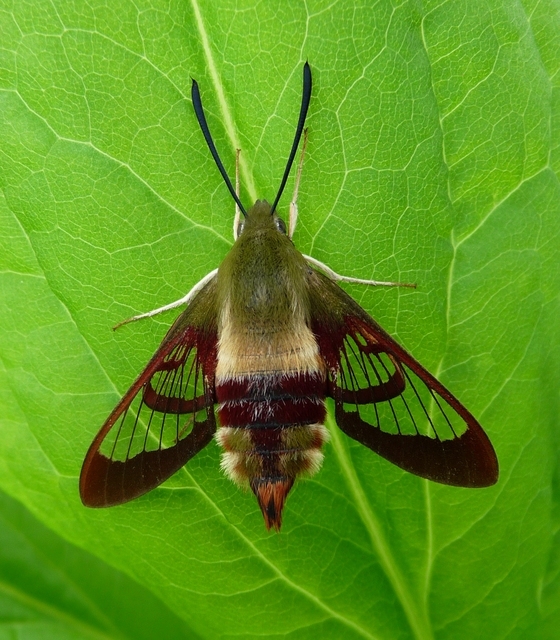Happy New Year from the National Moth Week team!
While National Moth Week celebrates the diversity of all moths, we like to shine a light—literally and figuratively—on a certain family of moths. Last year, we celebrated the year of the Silk moth (Saturniidae).
This year, we are celebrating the family Sphingidae. Robust fliers with distinctive wing shapes, the sphinx moths consist of about 1,463 species world wide, with about 124 species in North America alone.

Recent research has found that Sphinx moths emit high-frequency clicking noises form their genitals in response to bat echolocation. It is thought these noises inhibit a bat’s ultrasonic senses. One of the moths used in the study was the Green-striped Hawkmoth (Cechenena lineosa). You can read more about this study here. This defense behavior has also been recorded in the tymbal organs of tiger moths (subfamily Arctiinae). 
Death’s Head Hawk Moth (Acherontia lachesis lachesis). Spotted by Lenny Worthington on Project Noah.
Edgar Allan Poe takes some artistic license, describing an encounter with a Death’s Head Hawk Moth (Acherontia sp.; normally found in Europe and Asia) in New York.
“‘Four membranous wings covered with little colored scales of metallic appearance; mouth forming a rolled proboscis, produced by an elongation of the jaws, upon the sides of which are found the rudiments of mandibles and downy palpi; the inferior wings retained to the superior by a stiff hair; antennae in the form of an elongated club, prismatic; abdomen pointed, The Death’s—headed Sphinx has occasioned much terror among the vulgar, at times, by the melancholy kind of cry which it utters, and the insignia of death which it wears upon its corslet.'”

Sphinx moths are some of the most powerful fliers in the insect world, reaching speeds upwards of 53.6 kilometers per hour (over 30 miles per hour)!

Share your sightings of sphinx moths and other moths with National Moth Week’s partners! The fourth annual National Moth Week will be held on July 18-26, 2015. Registration forms will also be published soon.
Bibliography
- Watson, Traci. “Hawkmoths zap bats with sonic blasts from their genitals.” Nature. 3 July 2013. Web. Retrieved 29 December 2014. <http://www.nature.com/news/hawkmoths-zap-bats-with-sonic-blasts-from-their-genitals-1.13333>
- van Nieukerken et al. (2011). “Order Lepidoptera Linnaeus, 1758. In: Zhang, Z.-Q. (Ed.) Animal Biodiversity: An outline of higher-level classification and survey of taxonomic richness.” Zootaxa 3148: 212-221.
- Poe, Edgar Allan. “The Sphinx.” <http://www.gutenberg.org/files/2151/2151-h/2151-h.htm#link2H_4_0003>
- Byrd, J.H. “Chapter 1: Fastest Flyer.” University of Florida Book of Insect Records. May 31, 1994. Web. Retrieved 29 December 2014. <http://entnemdept.ufl.edu/walker/ufbir/chapters/chapter_01b.shtml#demoll_1918>
Pingback: Year of the Sphinx Moth | The Meadowlands Nature Blog